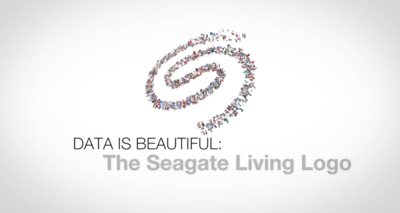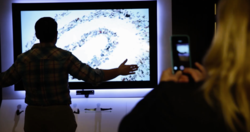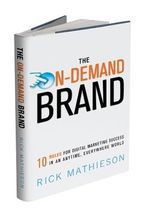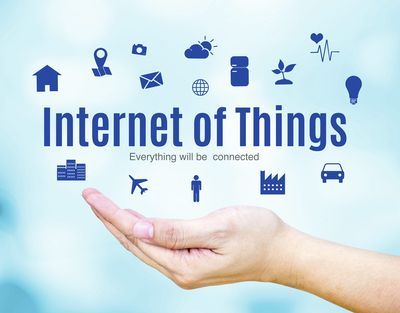Rick Mathieson's Blog, page 25
April 10, 2016
Domino's 'Zero Click' Ordering App (Video)
Domino's does it again���this time with an app that lets you order pizza without really having to do much of anything.
Just open the new "Zero Click" mobile app, and a 10-second countdown begins. Let it run out, and your pre-saved order is automatically on its way.
In my book THE ON-DEMAND BRAND, I look at how Domino's has put some serious dough behind being the default pizza choice for the digital generation.
Indeed, the Zero Click app is just the latest from Domino's Anyware initiative, which uses its Easy Order platform to make it a breeze to order your favorite pie via Emoji on Twitter, text messaging, smart watch, Ford Sync in-car, and more
(Full disclosure: Then-Domino's CMO Russell Weiner wrote a glowing review of THE ON-DEMAND BRAND, featured in a cover blurb.)
Still, Zero breaks into some uncharted territory, at least for me. Now the hassle of ordering has reached a dangerously low threshold.
As the App Store page for the app puts it: "It's easy. Maybe too easy. You've been warned."
How is your brand using digital innovation to set itself apart?
NEW: JOIN OUR LINKEDIN GROUP
Like us on Facebook
Follow us on Twitter
Listen in on iTunes
April 4, 2016
HoloLens TED Talk Demos The Future of Augmented Reality (Video)
We're still digging this TED video of HoloLens and Kinect inventor Alex Kipman as he shares his vision for the age of holograms.
Of course, we haven't decided how much of this is overly staged to optimize for video capture (clearly it's mapped to the area he's working in here, and it remains to be seen if HoloLens will create the same effect in any space).
We're also amused by some of the hype involved (we're pretty sure a thousand years from now, even AR will be a distant memory, replaced by something that makes it seem antediluvian at best).
And yes, for some reason he had us thinking of Ernie & Burt playing around with an ancient form of augmented reality.
But Kipman's vision is compelling, especially given his work with Kinect, the motion-sensing technology that enables you to interact with AR elements through body movement.
One thing's for sure: We can't wait to see where it all goes in next decade���let alone the 990 years after that.
NEW: JOIN OUR LINKEDIN GROUP
Like us on Facebook
Follow us on Twitter
Listen in on iTunes
March 23, 2016
The Rise of Feature-Length VR/AR Movies: Q&A with Omelet's Steven Amato
 Ready for full-length augmented reality and virtual reality movies?
Ready for full-length augmented reality and virtual reality movies?
In recent weeks I've been thinking a lot about what we are currently calling VR���namely branded entertainment intitiatives such MINI USA's ambitious cinematic shorts "Backwater" and "Real Memories," AT&T's "It Can Wait" and Target's "How on Hallow Hill."
As I point out in a recent conversation with Charlie Kraus of Limelight networks, there's just one problem: None of these are actually VR. They're 360-degree videos.
True VR is (or will be) far immersive because these videos, while incredibly cool, are missing one key element: interactivity.
I'm not talking visual navigation. I'm talking about the ability to pick up an object. Crouch low or jump high. The ability to move in relation to the virtual environment.
True VR is more like a first-person video game, whether the environment is photo/video-realistic or clearly fantastical, as with video games.
While this current wave of "VR" is an important step in that direction, it's critical that we don't lose sight of the "Holodeck"-like vision on which VR is based.
The evolution of VR will bring us 360-movies and eventually, truly interactive VR���or even better, AR or "mixed reality," that brings fictitious dramas to life within real world environments���for the ultimate movie-going experience.
Dawn of Awesomeness
As blockbuster movie fans (myself included) gear up for this week's 3D IMAX release of "Batman vs. Superman: Dawn of Justice," I found myself thinking about a conversation I had a while back with Steven Amato, co-founder of Omelet LA.
In this short clip (from a source interview for my book, THE ON-DEMAND BRAND), I ask Amato about the future of feature-length mixed reality experiences, and what it could also mean for brands using VR/AR to develop branded content in a world where you might not just sit inside that MINI in "Backwater"���but actually drive it. And where you don't just watch Batman & Superman clash with each other and their villains���you join them.
CLICK HERE TO LISTEN: OMELET'S STEVEN AMATO ON THE FUTURE OF FEATURE-LENGTHY 'MIXED REALITY' MOVIES
(Approx: 1:50 sec)
-----------------------------------------------------------------------
>> AVAILABLE EVERYWHERE BOOKS ARE SOLD <<<
���Through persuasive arguments and Q&A's with the major players in advertising, Mathieson makes an excellent case for greater creativity and outside-the-box thinking backed up with solid ideas."
Publisher's Weekly
>>> IN STORES NOW: ORDER YOUR COPY HERE <<<
-----------------------------------------------------------------------
NEW: JOIN OUR LINKEDIN GROUP
Like us on Facebook
Follow us on Twitter
Listen in on iTunes
March 19, 2016
Author Rick Mathieson Talks 'Facebook Reactions' (Radio Interview)
What's not to Like about Facebook Reactions?
For some marketers, the answer may be plenty.
For consumers, Facebook's new Reactions feature is a fun way to go beyond the Like button, enabling them to express their feelings about posts with one of six icons: The Like or thumbs up icon; the Love or heart icon���and now, a choice of four emoji faces: HaHa or laughing; shock or surprise; sadness���and anger. (See Jimmy Fallon's take on the pros and cons in the YouTube clip above.)
There are even expansion packs that replace the official icons with images from Pokemon, Deadpool, Adventure Time���and even Donald Trump.
Reactions: HaHa���or Anything But?
While consumers may give Reactions a thumbs up, some brands may feel their relationship with Facebook has just become more ... complicated. After all, instead of just Liking a brand's post, consumers are now free to express emotions some marketers may not exactly heart.
In fact, early buzz indicates some marketers may have their own facial expressions (or hand gestures) for Reactions.
But is that the right away to react?
In a radio interview the other morning on the Blasingame Show on Forbes Radio, I talk about Reactions and what they may mean for marketers: the good, the bad���and the ugly.
(Note: It sounds like there were some technical difficulties, so audio quality is not the best)
CLICK HERE TO LISTEN TO: RICK MATHIESON REACTS TO FACEBOOK REACTIONS (RADIO INTERVIEW)
(Approx: 4 min)
NEW: JOIN OUR LINKEDIN GROUP
Like us on Facebook
Follow us on Twitter
Listen in on iTunes
March 13, 2016
Honey Beer Builds Buzz with Bee Drones���That Bring Booze to You (Video)
While the Amazon brain trust puzzles over how to deliver boxes of books via drone, this Taiwanese beer brand is already headed your way���with beer.
In this marketing stunt promoting Honey Beer (yes, beer brewed with honey), Bee drones were dispatched to bring sample six-packs to office workers. Advertising enticed 15,000 people to register online for delivery in its first 10 days.
Meanwhile, sales were up 400% relative to other fruit-infused beers the brand had recently launched.
Now that's a special delivery.
Drink in the details, here.
NEW: JOIN OUR LINKEDIN GROUP
Like us on Facebook
Follow us on Twitter
Listen in on iTunes
February 11, 2016
Virtual Reality Check: Q&A With Limelight Networks' Charlie Kraus (Conclusion)
 IIf Augmented Reality holds so much more promise than Virtual Reality, are investments in developing VR-specific devices like Oculus Rift just a waste of time and money���especially when mobile phones can be used for both AR and VR?
IIf Augmented Reality holds so much more promise than Virtual Reality, are investments in developing VR-specific devices like Oculus Rift just a waste of time and money���especially when mobile phones can be used for both AR and VR?
In the conclusion of my recent conversation with content delivery network (CDN) provider Limelight Networks' Charlie Kraus,we'll get answers to that question���and learn why when it comes to both AR and VR, it's voice that's the killer app.
PLUS:
Listen to Part One Here.
NEW: JOIN OUR LINKEDIN GROUP
Like us on Facebook
Follow us on Twitter
Listen in on iTunes
February 9, 2016
Virtual Reality Check: Q&A with Charlie Kraus of Limelight Networks (Pt 1)
 It turns out the promise of virtual reality bites when compared to long-term prospects for augmented reality.
It turns out the promise of virtual reality bites when compared to long-term prospects for augmented reality.
At least that���s according to research from Manatt Digital Media that estimates the market for VR-based solutions will account for only $30 billion of a total $150 billion combined AR/VR market by 2020.
But there���s always a ���but,��� right?
In this case, that ���but��� is followed by a question: How are we supposed to square Manatt���s research with seemingly contradictory estimates like those from Gartner, whose ever-popular Hype Cycle chart shows AR far behind VR���indeed, far behind even autonomous vehicles���in its advance toward true market traction?
Short answer: You can���t. And in my view, it���s VR���s fault.
A Virtual Conundrum
To get to what I mean, I went to Charlie Kraus, senior product marketing manager for Limelight Networks, which is a leading content delivery network (CDN) provider.
CDNs, of course, are used by carriers and others to deliver all that content you consume online���text, graphics, videos, games, music, etc.���with a high level of availability and performance.
As you might imagine, AR (content superimposed on the user's view of the physical world) and VR (content that immerses the user in a simulated world) can only be as good as the networks through which that content is delivered.
After all, if you think buffering at a key moment on ���House of Cards��� is innervating, just wait until you miss a critical turn as you make your way around an unfamiliar city using AR-based navigation, or find yourself frozen and subsequently fragged by opponents within VR gaming worlds, due to network congestion.
S o while most of the focus is on manufacturers producing devices like Oculus Rift and app developers for more common devices such as iPhones, I figured content networks may have actual usage patterns from which to base projections.
o while most of the focus is on manufacturers producing devices like Oculus Rift and app developers for more common devices such as iPhones, I figured content networks may have actual usage patterns from which to base projections.
In part one of this Q & A, I ask Kraus to spell out the differences between VR and AR for listeners who may be confused by the terms (and no wonder���look at this article out today that seems to equate the two), and why Limelight is especially bullish on AR.
Then I ask about what I see as a key problem with reconciling contradictory projections about adoption rates for both AR and VR.
Sure, AR seems pretty well defined. But VR is an entirely different matter.
CLICK HERE TO LISTEN TO: VIRTUAL REALITY CHECK: Q&A WITH CHARLIE KRAUS (PT 1)
NEW: JOIN OUR LINKEDIN GROUP
Like us on Facebook
Follow us on Twitter
Listen in on iTunes
January 31, 2016
World's First Patent-Pending Brand Logo���A Behind-the-Scenes Video
 It���s a logo like none other.
It���s a logo like none other.
Which is why there���s no way I could resist asking Rich Silverstein and other people central to its creation to appear on-camera to share insights on "The Seagate Living Logo"���the world���s first patent-pending corporate brand identity.
(See video at bottom)
NEVER THE SAME LOGO TWICE
 Yes, it���s true that brand identities rendered in real time through data visualization have been around for a while now.
Yes, it���s true that brand identities rendered in real time through data visualization have been around for a while now.
But the Seagate Living Logo���launched at CES last January���is the first to have a patent in play for literally taking its shape using live data feeds flowing from public data sources such as Twitter, Facebook, Instagram, LastFM, Amazon, Getty Images and more.
The idea? To represent the integral role Seagate storage solutions play in storing 40% of the world���s data, and in enabling the data-centric business models of today���s most innovative companies.
INNOVATION IN MOTION
 Throughout the last 12 months, new variants have included interactive Living Logos that respond to physical movements through Microsoft Kinect-based technology���allowing you to essentially swim amid social media posts and images.
Throughout the last 12 months, new variants have included interactive Living Logos that respond to physical movements through Microsoft Kinect-based technology���allowing you to essentially swim amid social media posts and images.
A standalone Facebook version lets you personalize the experience using your own online images.
And another can be customized in real time using Twitter and Instagram keywords and handles, as well as your own uploaded images, for live business meetings and events.
THE START OF SOMETHING BIG (DATA)
As is typical in social media these days, reaction to the Living Logo there and elsewhere has ranged from the snarky to the sublime.
Yet regardless of where you fall on that score, the Living Logo represents a notable new entry into the annals of corporate branding.
And it seems to have sparked a trend.
Last July, Brazilian telco FS Company launched a dynamic logo that uses code and generative design to reflect the real-time activity on the company���s servers.
Just within the last few months, HavasOrtega developed a data-enabled ���living logo��� for a CEO summit in the Philippines.
And a UK-based design firm called Amaze is now tracking employees��� physical movements and digital activities to drive a ���human-powered��� living logo using a framework that sounds a lot like Seagate���s.
Which makes sense. Given the fact that Gartner reports nearly 75% of companies plan to invest in big data solutions in the next two years, the Seagate Living Logo surely stands on the cutting edge of what is likely to become a crowded field in the years ahead.
This short video, edited by Seagate���s George Shubin, will give you the inside scoop on the Seagate Living Logo and how it came to be.
(Full disclosure: I've had creative input on the development of the Living Logo, and have worked closely with these and other people working on the project at Seagate, Goodby, Silverstein & Partners, Pet Gorilla and elsewhere.)
DATA IS BEAUTIFUL: THE STORY BEHIND THE SEAGATE LIVING LOGO
NEW: JOIN OUR LINKEDIN GROUP
Like us on Facebook
Follow us on Twitter
Listen in on iTunes
January 24, 2016
10 Digital Age Coke Taglines���From The Distant Past
So much for "Happiness."
As the marketing world obsesses over Coca-Cola's decision to trade out its hugely popular "Open Happiness" tagline to "Taste the Feeling"(see one of 25 new spots, above), it's been fun revisiting the commotion created over some of its previous slogan changes.
Check out reaction (including my own) to "The Coke Side of Life" in Ad Age a decade ago.
Indeed, whenever Coca-Cola makes marketing changes of this magnitude, it can be a hoot to take stock of its taglines from times past. You usually find some surprises along the way.
A SIP DOWN MEMORY LANE
Despite being one of the world's most successful brands, there have certainly been some oddballs in Coca-Cola's advertising oeuvre���who can resist "Enjoy a Glass of Liquid Laughter" (1911), or "Proves a Big Help to Tired Housewives" (1909)?
And then there's that golden oldie: "Coca-Cola: The Great National Temperance Beverage" (1907)���which, we're told, "has none of the ill effects or 'let down' qualities of alcoholic stimulants." Yum.
Some old taglines are just inscrutable���"Same to You" (1940) sounds as if the feeling you're tasting is indignation.
And today's regulators might have a field day with any tagline that proclaims Coke is "Pure and Healthful" (1904), and "Adds a Refreshing Relish to Every Form of Exercise" (1906), with "The Perfect Blend of Pure Products from Nature" (1923).
To modern audiences, other tags charitably might seem like aspirational positioning in the extreme���such as, "The Ideal Beverage for Discriminating People" (1906), "The Sign of Good Taste" (1957), and "The Best Drink Anyone Can Buy" (1913).
After all, everyone knows the best drink you can buy isn't Coca-Cola. It's Coke Zero.
PAST AS PROLOGUE?
Despite so many antiquated curios from campaigns past, many Coke taglines of yesteryear would be completely at home in the digital age.
Think about it:
In an era of virtual reality, 3D printing and social media poseurs, Coke promises to bring you "The Real Thing" (1948)
Ad skipping technology? "Relax with the Pause that Refreshes" (1947)
The age of Uber and Airbnb? "Share a Coke" (2011)
Group texting, geo-fencing and flash mobs? "Meet Me at the Soda Fountain" (1930)
Personal aerial drones? "Look Up, America!" (1975)
Even online activism and crowd funding fit that all-time favorite, "I'd Like to Buy the World a Coke" (1971).
Yet perhaps it's that texting-and-flash-mob example that hits home most. As it happens, Coke classics seem especially well suited for the mobile revolution���including (among a surprising number of others):
"Anytime, Everywhere���The Favorite Beverage" (1918)
"Along the Highway to Anywhere" (1949)
"Call for Coke" (1953)
"People on the Go���Go for Coke" (1954)
Whether this is all a sign of soda-pop prescience, promotional predestination or pure chance, Coca-Cola remains a venerable brands whose slogans will provide plenty for (pop-) cultural anthropologists to ponder in decades to come.
Will future advertising aficionados still find it as amusing as we do?
As Coca-Cola itself once put it: "Always."
(Check out these and other taglines here, here and here)
NEW: JOIN OUR LINKEDIN GROUP
Like us on Facebook
Follow us on Twitter
Listen in on iTunes
January 21, 2016
What's Next for Marketing & The 'Internet of Things'
Is 2016 the year marketing and the Internet of Things finally enter a meaningful new phase?
Don't bet on it. But there are some promising signs.
In the days since CES, much has been made of the emergence of new ecosystems enabled by so-called "smart products"���connected devices that deliver information or can be controlled using your mobile phone.
Fitness apparel brand Under Armour was one entrant that generated a lot of attention during the show for its new Gemini 2 running shoes, which can track run duration, distance and more���without the need for syncing with a mobile device.
It's just the latest in innovative smart products UA has been rolling out, including a heart-rate monitor, new headphones and apps that, as Engadget reports today, the company hopes to use as the foundation for an interconnected ecosystem.
Indeed, while Engadget indicates these products still have a ways to go, they still point toward fitness apparel that doesn't just keep you comfortable, but also delivers useful services to you automatically and seamlessly, behind the scenes, to help you attain your goals.
From Data Collection to Data Utility
Last week, Social Times cited a report from the Economist Intelligence Unit that finds 51% of marketing executives expect the Internet of Things���or "IoT"���"to revolutionize marketing by 2020."
In the view of the Times at least, the first phase of marketing's embrace of the IoT will be what we experience today: Devices that collect data on usage patterns, facilitating new offers based on needs, or helping developers improve the products.
In Phase 2, says Social Times, brands will open up the their ecosystems to other advertisers. Think refrigerators that don't just send you alerts that you're almost out of milk, but also let Tropicana send you a coupon for Orange Juice.
It's hard to imagine the Times can possibly be wrong about that. Some brands will indeed attempt such things���it would be crazy to not explore monetizing the ecosystem in this way.
It remains to be seen, however, whether consumers will really cotton to a barrage of offers coming from the fridge, the toaster, the washing machine and so on.
I'm personally skeptical many people want an ad supported home appliance���the equivalent of a promotional announcement that "this refrigeration is brought to you by Heinz Ketchup."
Product Plus
Instead, as I write in my book, THE ON-DEMAND BRAND, the ecosystems enabled by the IoT likely represent something far more compelling than applying ad models from one medium���essentially banner ads or mobile coupons���to a whole new one (in this case your home appliances) merely to eke out some additional revenue in ways that alienate customers.
While ad models will no-doubt be explored, ultimately brands will keep these ecosystems to themselves, finding that advertising only cheapens what may be their only point of differentiation in a world where physical products themselves are increasingly commoditized.
As I put it in the book, "In the digital age, differentiation may come less from the quality with which your products are manufactured, and more from the on-demand digital services they deliver to your customers."
And I'm not just talking about household appliances, by the way. I'm talking about everything from those Gemini 2 running shoes to your breakfast cereal, to your kids' toys, to your laundry detergent.
Smart brands will focus on delivering truly useful services via these connected ecosystems. Not the kinds that throw coupons at you. Rather, the kinds that add immediate value���Lean Cuisine frozen dinners that tell the microwave how to cook them to perfection, for instance���or provide new services, such as real-time smoking cessation support from Chantix, triggered by sensors built into a wristband.
Perhaps some of these services will prove valuable enough to warrant both freemium and premium subscription models���turning products sold once into ongoing revenue streams in ways customers appreciate, instead of loathe.
In a recent radio segment with Forbes Radio's "Jim Blasingame Show," I talk about this emerging trend as one of three that will start to gain traction in 2016.
Do note that this particular program is aimed at SMBs, so I talk about the trend overall, and then address how smaller brands and local stores can leverage existing technologies to avoid being Amazoned by the likes of, well, Amazon and its Dash devices.
Which, like those Gemini 2 running shoes, are perfect early examples of products-as-services enabled by an IoT in which many of even the earliest offerings provide tremendous value without requiring a digital interface at all.
CLICK TO LISTEN���TREND WATCH: "PRODUCTS ARE THE NEW SERVICES"
Or follow this link: http://ow.ly/Xo7OP
(Approximately 4 minutes, 14 seconds)
NEW: JOIN OUR LINKEDIN GROUP
Like us on Facebook
Follow us on Twitter
Listen in on iTunes
Rick Mathieson's Blog
- Rick Mathieson's profile
- 1 follower





